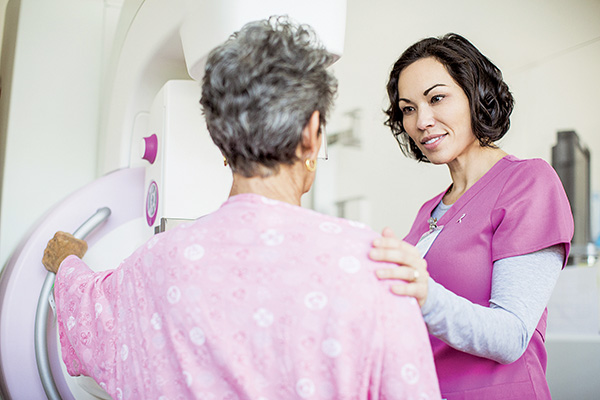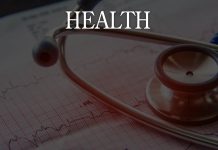
By Judy O’Gorman Alvarez
Screenings for breast cancer have come a long way since mammography became the accepted technology in the 1960s.
When Harriet Borofsky, M.D., joined Riverview Medical Center’s Women’s Center as the medical director of breast imaging in June, she came with plans to help women navigate the myriad options they now have to best manage their breast health.
Borofsky aims to lead a breast imaging center committed to providing state-of-the-art, impactful multimodality technologies for breast health and early detection and diagnosis of breast cancer.
The Harvard-educated Borofsky completed her residency and fellowship at Stanford University before serving as medical director of breast imaging in California when dedicated breast centers were in their infancy.
“My passion is breast imaging and early detection and diagnosis of breast cancer because I see the impact it’s had on women’s lives for the past 26 years,” she said. “So I feel really lucky to be involved in the program here.”
“When I first started almost 30 years ago, many breast cancers were advanced at diagnosis,” she said. Treatment was aimed at later stage breast cancers, often resulting in women having mastectomies. “And all women with invasive breast cancer were having chemotherapy.”
Since then, great strides have also been made in the treatment of breast cancer. Nowadays, Borofsky said, “most women diagnosed with breast cancer are at a very early stage. The overall majority do not need mastectomies, and the majority of women with invasive breast cancer do not need chemotherapy and now even radiation therapy for some women is optional.”
She called it a “little paradigm shift in treatment” driven by the widespread use of mammography screenings and early detection of cancers.
Not all breast cancers are the same, Borofsky noted, but it used to be that “all women with breast cancer were treated the same,” she said. “Now there are targeted treatments and even genetic testing.
“Back when breast cancer was thought of as one disease, genetic testing wasn’t even on the radar.”
As a dedicated breast center, the accredited Breast Imaging Center of Excellence, at Riverview’s Women’s Center, has a skilled and committed staff. “We live and breathe taking care of women coming in with the full spectrum of breast issues.”
With an emphasis on screening – diagnostic imaging, evaluating problems – women will come to the center for a host of issues, such as lumps, pain, nipple discharge, or with mammograms showing lesions or abnormalities that need to be evaluated or biopsied.
As far as detecting breast cancer, Borofsky said, “The most impactful technology that I will see in my medical career is digital breast tomosynthesis, also known as a 3D mammogram.”
When developing a personalized approach to screening, another important part of the puzzle is assessing a person’s risk. In previous years it was thought women 40 years and older should have a mammogram screening every year. “It used to be one size fits all,” Borofsky said. “However, women come in at all different ages, they come in with all different risks. They come in all different breast densities – which is also a risk factor – and it impacts how well mammograms can detect everything.”
Risk assessments can help decide if a woman should be having an MRI in addition to a mammogram, if she has a probability of having a genetic mutation and should be seen by a genetic counselor and it also informs whether a woman is at high risk of breast cancer.
Some women “might be offered certain medications to decrease the risk of breast cancer,” she said.
According to Borofsky, breast cancer patients are often shocked when diagnosed because they insist no one else in their family has had breast cancer. “Believe it or not, at least 75 to 80 percent of women that we diagnose with breast cancer don’t have a family history,” she said. “I tell them the greatest risk factors are having breasts and getting older.”
Future plans for Riverview’s Women’s Center include expanding capacity and adding another mammography unit.
“There is a new (procedure), I call it the next generation of doing biopsies, which is very automated and provides real-time imaging of the samples, and it cuts the time of a procedure by half,” Borofsky said.
She also hopes to increase screening even more.
“I think education is a component of why women don’t get screened,” she said. “There’s a lot of confusion out there about how often to come in, at what age to come in because the screening recommendations are different from different governing bodies or medical organizations and that’s confusing for women.”
She said her goal is to “get out in the community and get the word out about how important screening is and then make the experience as comfortable and informative as it possibly can be” for patients. “We’re making sure we’re providing the highest level of care and the best experience.”
Borofsky also hopes to increase foundation support for screenings for either uninsured or underserved and underinsured women, make appointments easily accessible and ease anxieties. She and her team work to alleviate apprehensions about mammograms – from scheduling an appointment to the procedure itself to waiting on results.
“Screening is something none of us really are particularly interested in getting,” she said, but early detection of breast cancer is crucial.
“We just want to stress that we want women to come in to get screened,” she said. “Don’t be fearful. We’ll get you through the process.”
The article originally appeared in the October 7 – 13, 2021 print edition of The Two River Times.














